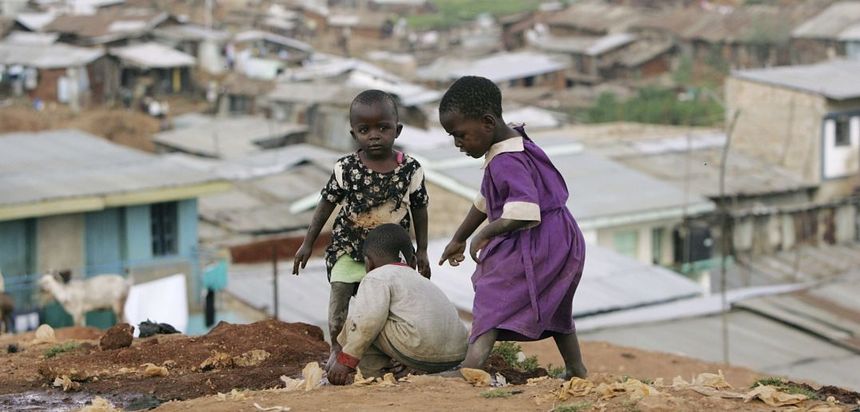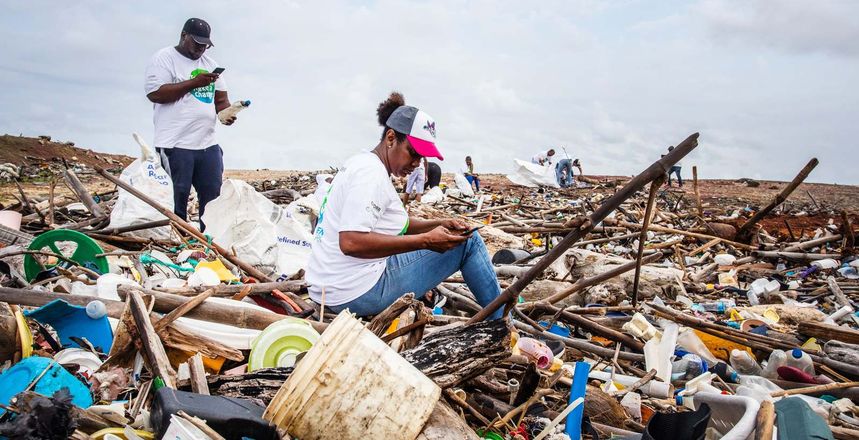Smart Mobility Blogs
6 min.
"Making a positive impact"
Recently, Future Islands had the pleasure of meeting up with Susan Ying to talk about her latest adventure in an innovative start-up Ampaire, developing hybrid-electric aircraft, where she is currently serving as the Senior Vice President of Global Operations. We spoke to Susan Ying about Ampaire and their ambitious plans for the future, and about the current state and future potential of electric flying in general, the challenges she has identified, and the importance of sustainable practices for the future of our entire planet.
Passion and natural curiosity
“How can such a huge airplane just defy gravity?”, says Susan Ying when asked about her limitless passion for anything aviation-related, “I was always very, very curious and I wanted to be an airplane designer […] In order to do all of these analyses for designing airplanes, when I was in school, there was a science called aerodynamics. So, I followed this course and I got my degree in aeronautics and astronautics specializing in computational aerodynamics. I did the research for my PHD based at NASA Ames, using NASA’s leading-edge high-tech equipment, the “Supercomputers” and my advisors were also from NASA”.
After getting her degree in Mechanical and Aerospace Engineering from Cornell University in 1981 and then completing her PHD in Aeronautics and Astronautics at Stanford University five years later, she went to work as a Principle Research Scientist and Teaching Professor at the Department of Energy lab first at the Florida State University, then at Iowa State University. After being a flood victim in Iowa, losing all her belongings and becoming homeless, she applied for a job at McDonnell Douglas [became Boeing in 1997] to design airplanes, “its’ what I always wanted to do” said Susan. “I worked on some very interesting projects, all the way from the C-17 to the 787 Dreamliner and more electric airplanes. During 20 years at the company, I became an executive [Director of Research and Technology] and then I retired in 2014, but as soon as I hung up my boots at Boeing, and guess what? I literally had a knock on my door and was asked if I wanted to go to work at COMAC [Commercial Aircraft Corporation of China] in China, developing a new airplane in Shanghai?”
“When I joined Ampaire, I was employee number six”
After her experiences in China, Susan Ying became Senior Vice President for Global Operations at a very innovative and, perhaps more importantly, very ambitious start-up in the field of electric aviation: Ampaire. At the time, back in 2017-18, Ampaire was very much still in the start-up phase and that wasn’t necessarily the environment in which Susan Ying had been so successful in the past. She was used to huge corporations like Boeing, who have 170.000 employees, so Ampaire did not only offer her a nice opportunity, but a new challenge as well.
“Ampaire was started in 2016 by three young men. I so admire their vision and the ambition they have to really go do it, because for the long product development time and huge resources required in aviation, you had Airbus, Boeing and Bombardier […] The barriers for entry are so high, you have to invest hundreds of millions or even billions to start a company [in the aviation industry], while these young men, they started with nothing literally from the garage of one of their parents’ houses. Nevertheless, they committed to this electric airplane start-up, so I really admire that courage and conviction”.
“It’s so hard to get innovation going at big companies”
“The big companies are too big [to prioritize innovation] and they have to keep their existing airplanes in the air, to keep selling those existing airplanes”, explains Susan Ying in regard to innovation at Ampaire and in aviation in general, “Innovation is very hard. I retired from Boeing as Director for Research and Technology, where I was closely involved in the development of the Boeing 787, which was called the Boeing 7e7 at the time, with the e for efficient, electric and environmental responsible. This opportunity for a new product such as the 787 or “Dreamliner” only comes around every couple of decades! So, I know that it’s really hard to get innovation into new airplanes at big companies. In small companies, if you have an idea, you can talk to the CEO or the CTO right away. You work out a solution side by side, and you don’t have to go to your boss, your boss’ boss, and the many layers of management etc. In big companies, often innovative ideas are killed somewhere between you and the top decision maker. For Ampaire, that’s how I started and I really admire how the co-founders started this journey”.
Dutch government getting involved
“I have been in the aviation business for a long time, so I have a huge network of professionals in aviation and a lot of trusted suppliers and partners”, Susan Ying explains, “Through my connections we were able to team up and compete to win two UK projects. One is the SATE (Sustainable Aviation Test Environment) project and the other 2ZERO (Toward Zero Emission Regional Operations). Both projects were funded [by Innovate UK]. At first, we thought we would get just a small part for SATE but then both projects were funded. The SATE was to do demonstrations in Scotland and 2Zero to do demonstrations in southwest England as well as developing a regional hybrid aircraft to operate efficiently in the new infrastructure environment. Both were very successful, but when we wanted to apply for [funding of] the next phase, which is to build the prototype airplane developed and demonstrate in the expanded southwest region, the UK government had taken a 90-degree turn to hydrogen [projects in this class]. Given that we proposed a hybrid, we were not funded. Through the projects in the UK though, we got noticed by the Dutch government. That was important, because the Netherlands and the whole European Union, including the Nordics, are leading the way in sustainable mobility”.
“Electric aviation is not going to work by itself, it requires a whole ecosystem”
“I got in contact with Marieke Smit. She believes that all stakeholders need to come together in order for this to work”, says Susan Ying, “Electric aviation is not going to work by itself, it requires a whole ecosystem. Like electric vehicles [on ground], electric airplanes need to be charged, so you have to invest in the charging infrastructure and that will impact the grid and existing operations, so you need to improve the distribution of the energy and of course, that energy needs to be “clean (or green)” as well. Given that the current battery capability can support short-range flights, the initial applications in electric aviation would be best fit in the island regions, such as the Highland and Islands in Scotland and the Caribbean islands. The whole ecosystem [in the Dutch Caribbean] needs to be developed, not just the airplane has to be there. Ampaire’s practical approach in retrofitting electric propulsion to existing planes allows the first-to-market application. So, currently Ampaire is working on a pilot study of hybrid-electric aircraft operations in the Dutch Caribbean for the Ministry from many different perspectives. This includes the requirements development (such as the infrastructure and power supply), regulations, and the education and knowledge perspectives. That’s why I said to Marieke that I didn’t just want to do a flight demonstration there and take the funding, because they would not have learned anything. Afterwards, we would really like to sell these airplanes to the local operators for commercial operations, so the people can take those flights for a fraction of the current ticket price. It’s necessary and somebody has to do it, and Ampaire can leverage the experience in Scotland where we worked with Loganair and other stakeholders”.
Island nations as trailblazers
Susan Ying and Marieke Smit were clearly on the same page as far as the challenges (and the answers to those challenges) of electric aviation, so they kept in touch. They then met up again in person last year, during the first international Sustainable Air Transportation event in the Caribbean Netherlands, called “A Flight to the Future”. While Marieke’s idea of stakeholder involvement was clear, Susan Ying was surprised by the fact that she was the only OEM (original equipment manufacturer), or airplane builder in simpler terms, that had made the effort to attend the conference.
“So, last year, when the DCCA (Dutch Caribbean Cooperation of Airports) agreement was signed on the islands [of the Caribbean Netherlands], Marieke’s vision was to have all the stakeholders there during the conference”, Susan Ying continues, “I took it very seriously, because like the founders of Ampaire, I personally think that the first places where this [electric aviation innovation] is going to happen are going to be island countries […] In countries like Indonesia, which has more than 70.000 small islands, or the Caribbean with hundreds of these smaller islands as well, where you hop between islands [with small planes], there is a huge demand for this in these places. Other examples include the fjords in the Northern hemisphere such as Norway, Sweden, and Finland. These island nations and countries with countless [smaller] islands could be entry points in the market, for the short-haul electric airplanes”.
“Kind of a mixed bag in terms of rules and regulations”
Susan Ying zoomed in on the specific case of the islands in the Caribbean Netherlands. Through discussions with Marius Sliedrecht, currently Program Manager Luchtvaart Caribisch Gebied [Aviation Caribbean Region] at the Dutch Ministry for Infrastructure and Water Management (Infrastructuur en Waterstaat) and one of our very own Future Guides, and the previously mentioned Marieke Smit, she gained a deeper understanding of the specific regulations challenges that exist in the Dutch Caribbean region.
“Ampaire got a start in Scotland with a prototype hybrid (6-seat) operating on actual commercial route and the next step is to take our certified airplane to operations and try out in other similar island hopping routes.” We have the (prototype 9-seat) airplane flying already since last October, a hybrid-electric 9-seater single engine, the Eco Caravan. In the US, this model is used a lot already in logistics. Companies like FedEx and UPS use it a lot for shipping, especially overnight. In Europe, you don’t see that many, because there is the EASA rule that forbids single engine (turbine) operations for commercial aviation. That’s not because of the airplanes, but because of the airports, because when you have a malfunctioning single engine plane, it needs to land at the closest airport which may not have the IFR published procedures or infrastructure as most airports in the US”.
“In the Caribbean, it’s kind of a mixed bag when it comes to rules and regulations”, Susan Ying continues, “For example, Bonaire is the Netherlands, so they go by EASA rules. On Aruba, they have their own CAA, and Curaçao have some FAA and some original CAA, so it’s a mixed bag. This creates considerable challenges for (new) planes traveling from one island to another within the region, as our new plane would have FAA certificate only initially.”.
“How can the prices be reduced?”
During her visits to the Caribbean Netherlands, Susan Ying experienced firsthand some of the major problems with current air travel between the islands. She was particularly impressed, and not in a good way, by the high ticket prices locals currently have to pay to travel from one island to another within the same region, especially with her experiences with Ampaire in Scotland very much in the back of her head.
“The real nice thing about electric aviation is not just that it’s sustainable and that it makes less noise, but if you are an operator, the best part is that it will save you money”, argues Susan Ying, “A traditional flight between Aruba and Curaçao easily costs around $ 300, which is ridiculous, so why is that? It’s because they are using these big airplanes, but even if they used smaller turboprops, the prices would still remain too high. How can these prices be reduced? And what is needed to do that? You need infrastructure, solar energy, and so on, and if you keep getting energy from the mainland, the problem [of high prices] remains”. Some may argue that this is due to the “low demand” hence high price. But Susan believes it is a chicken-and-eggs thing as the price drops, then the demand would increase accordingly”. As an example, Ampaire’s hybrid Eco Caravan can be up to 70% lower in energy use for short routes compared to the original turboprop version. This would help with the operators’ fuel cost considerable that could translate to lower ticket prices for passengers.
Future of electric flying
Working towards the end of our interview with Susan Ying, we asked her about her vision for the future, not just for Ampaire but for electric aviation in general as well. While she still sees a lot of big challenges and obstacles for electric airplanes to scale for longer haul routes in addition to air travel between islands, she is also positive about the many opportunities and possibilities that lie ahead, especially in the regional aviation market.
“I think the future is going to be cleaner, quieter and more affordable”, Susan Ying told us, “There are also rapid developments in technologies which will further accelerate the manufacturing and adoption. For the people (or passengers), flying should be fun, it shouldn’t be something for which they have to save every last penny nor feel ashamed as their flights also enabled more carbon emission. It’s very simple: it has to be clean, quiet and affordable”.
“Who is going to fly hydrogen planes when they have to pay twice as much?”
The affordability aspect is particularly interesting, as it seems to be something that people often tend to forget when talking about the potential of electric air travel. For Susan Ying though, it’s practically front and center, as she cannot see mainstream adoption of any kind if the costs remain too high. She substantiates her vision by referring to hydrogen as an alternative to electric flight, which in her view is not an alternative at all due to the excessive associated costs.
“A lot of people forget about the affordability factor, so that’s why, in my view, the hydrogen is not likely going to happen, because it cannot be affordable”, much like the Concorde (which even aimed for high-networth business travelers), explains Susan Ying, “There are technical issues to start with. In its natural form, the hydrogen molecule is 7.000 times the volume of the fuel molecule [so imagine the volume difference alone] […] With hydrogen, there are several things that could happen. First of all, you need to get “green hydrogen”, which process is highly inefficient. The efficiency of creating energy by using renewable energy is around 30% to 40%, so you lose that 60%. If you use that same clean energy to generate electricity, the efficiency goes up to more than 90%. So [with hydrogen], you are wasting that 60% which could have been used for other purpose. There is more though, because after that, the hydrogen needs to be compressed and transported, and on the airplane itself you need to put it somewhere too. You can’t put it in the wings, where the fuel is stored, the high-pressure hydrogen tanks need to be placed somewhere. Say you have a 100-passenger airplane and now you have reduced it to 50 passengers. Your revenue will be halved, which means ticket prices could be doubled for the same airplanes, so who is going to fly hydrogen airplanes if/ when they have to pay twice as much?”.
“For the new training curriculum, we are working with KLM and EASA”
Finally, we spoke with Susan Ying about the need for new engineers and technicians who are specifically trained to work with electric airplanes and the whole infrastructure that comes with it. This is basically an extension of the infrastructure and ecosystem challenges we discussed earlier, as there will be a future for electric aviation and we need to train and educate enough professionals and experts to facilitate that development. In line with this topic, we also spoke about the importance of being able to retain talent for small islands like those in the Caribbean Netherlands. This connects seamlessly to our “Opportunities to make the Caribbean more sustainable” webinar from last year and to future conferences where Future Islands will be speaking, in regard to how the islands can retain the necessary talent to build an ecosystem that is fit for electric aviation.
“We can have the airplanes flying around, but if you have no technicians…”, says Susan Ying, “In regard to the islands, I heard that most of the young men and women can come to the Netherlands to get their degrees, and afterwards they stay [in the Netherlands]. They don’t go back. Right now, to train technicians there are standard courses and a standard curriculum as they have to follow EASA rules, but you can imagine that for the new type of flying, for electric propulsion, you have new technologies. This typically is not included in the training of mechanics and technicians, so the new training curriculum is being written up as we speak. For the new training curriculum, we are working with KLM and EASA, to try to put all of this together. That’s important, because the content needs to be approved by the regulators (such as EASA), not just anybody can put this content together. The content needs to ensure safety and requirements follow the published rules”.





